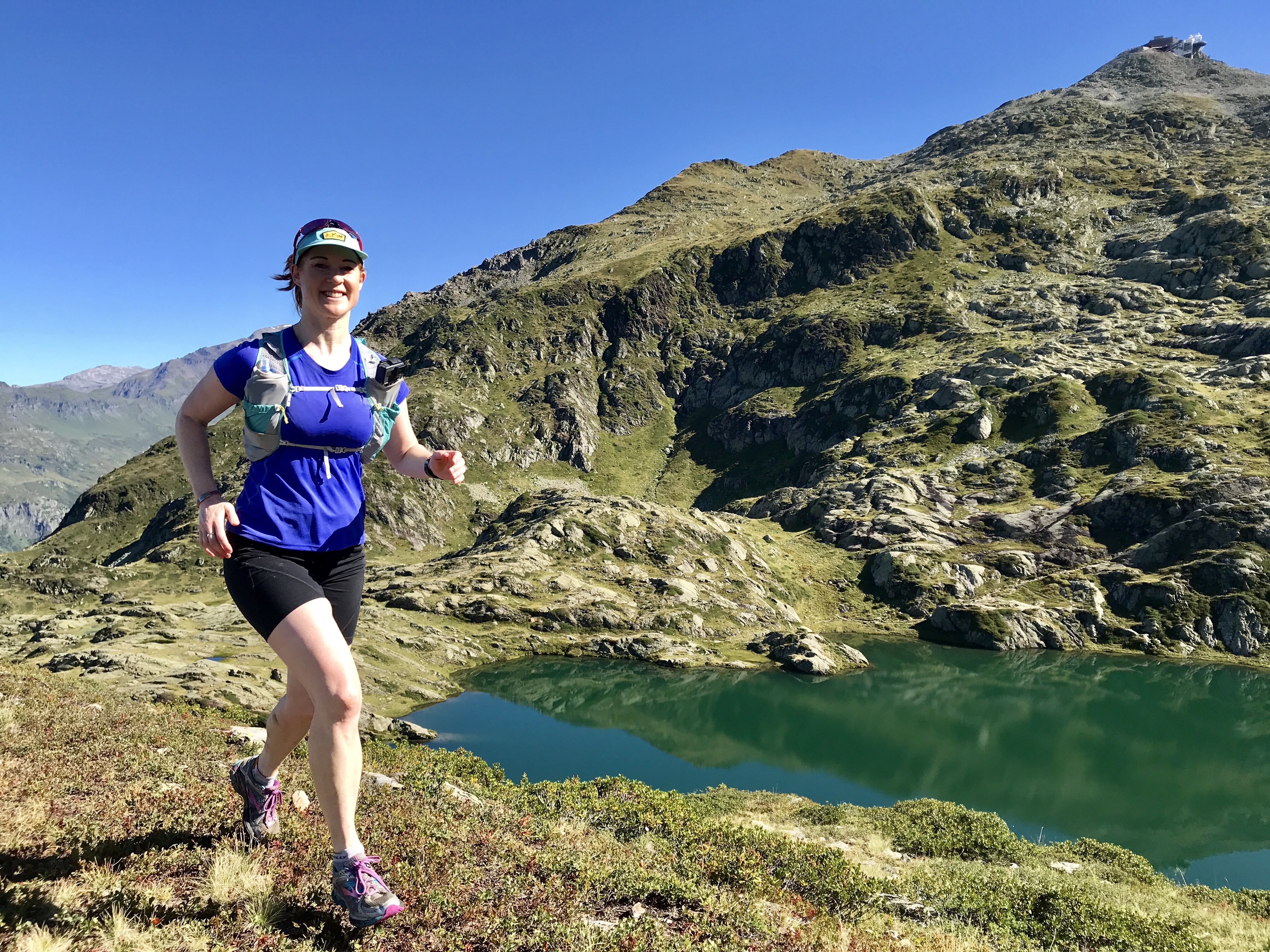4 mistakes you keep making when you run – and how to fix them
You might not realize you're sabotaging your own training sessions, but we all do it

If you don’t make any of these then you’re either an elite athlete or a bloomin’ saint. Personally I do all of these every single week even though I’ve written this article based on many years of knowing these very important four things! Yes, I am an IDIOT. But maybe you are too… We all need to tattoo these on our foreheads, but even then we’d cover them over with a BUFF and hobble out of the door for that all important run, wouldn’t we? Read on, if you dare. Are you clever enough to stop making these four mistakes?
1. Ignoring pain
How many times have you gone out with a niggle or noticed a bit of a twinge half way round? You think, “Oh not that again, it hasn’t gone away. Never mind, I’ll just ice it when I get back.” Then you get back, immediately forget and sit straight back at the computer, get the dinner on or start doing other jobs.
The thing is, these niggles don’t usually just disappear on their own, and they usually need more than ice and a bit of rest to solve. When your body produces a small amount of pain like this that’s easy to overlook it’s most often responding to a weakness that needs strengthening up with these simple, regular exercises from podiatrist Nick Knight from NK Active.
Solve it: Before or after you run, spend 5-10 minutes actually doing those boring strength exercises your physio gave you when you went to see them about this very same problem years ago. You can also do these three key strength moves to prevent and cure the common running injuries before they stop you in your tracks: calf-raises on a step with bent and straight leg, single-legged squats with bent knee, Bulgarian split-squats, sidesteps with a resistance band around the feet. Start with 5 x 8 reps to get the hang of the movements, then do fewer reps with a heavier weight pack on your back. The aim is for the weight to be heavy enough that you’re only just be able to complete the last rep with good form in every set.

2. Running too fast!
Do you identify with popping out for a run at that same comfortably hard-ish pace every single time? You don’t want to run too slowly because that doesn’t do anything (wrong!) but it’s too much effort to do a full on interval session so you just run in that out-of-breath-but-it’s-ok-for-an-hour zone. This is the biggest mistake renowned ultra running coach Ian Sharman and host of The Podium Runner Endurance Podcast sees in runners over all distances in his long career.
Solve it: We know it sounds counterintuitive but all the top coaches (including Ian) agree that you need to run 80% of your mileage at an easy, chatting pace, where your heart’s not getting overexcited and your lungs are enjoying inhaling all that lovely fresh air. This is what builds your aerobic base and makes your body really strong for running without injury because these runs are easy and quick to recover from.
Then 20% of your weekly training should be in that top heart rate zone where it’s hammering in your chest as if it’s trying to escape, lungs heaving wildly. Yes, it’s not comfortable and this is what puts many runners off, but if you rebrand it as quick, exciting once-weekly fun rather than hard work, you might feel more inclined to include these sessions. Better still, rope in a friend for motivation.
Advnture Newsletter
All the latest inspiration, tips and guides to help you plan your next Advnture!
Start with a two-mile steady jog warm up to the base of a gentle-ish slope, then run 5 x 30 second relaxed hill sprint efforts (focusing on good posture, see below) then walk/jog back to the start each time. Then a two-mile steady jog home. Increase and vary the reps and efforts until you’re doing a total of 10 minutes of intense effort work every week; for a lot of runners that will be plenty.

3. Bad posture
Do you hate those race photos from the last few miles of the race? The ones where you look like you’re walking in pain, or having a toilet accident. It doesn’t look great in terms of running formm does it? Movement coach and technique specialist Shane Benzie, author of Running Reborn has been researching the running styles of indigenous populations and great athletes from all over the world including Ethiopia and Kenya. He says there are a few common tips that all runners can use to increase our efficiency through better posture and foot placement.
Solve it: Watch world record marathoner Eliud Kipchoge and note how elegant his form is. Then film yourself and watch it back in slow motion for a better idea of how you run. Aim for a cadence of around 170-190 steps per minute (you might need to speed up your leg turnover a little for this) then try to channel your inner Eliud, perhaps say the words 'tall and bouncy' to yourself to encourage better posture and spring. Imagine you have a string pulling you up through the centre of your body out of the top of your head and this will immediately stop you from hunching over and activate the elasticity of the fascia, a thin layer of highly elastic, fibrous tissue around your muscles. Try to place each foot down with what Shane calls a tripod landing - neither heel-striking nor forefoot striking but the whole foot down at the same time. For more, see Shane’s book Running Reborn.

4. Overtraining
Too much, too soon is the mistake so many of us runners make, especially beginners excited by swift fitness increases and the huge lure of super long ultra races of 50 miles and even 100 miles. We know it’s tempting, those races take you to utterly amazing mountains and far-flung lands. They hold particular kudos at the online water cooler of sport, Strava, and the medals themselves have hypnotic qualities not to be underestimated. However, relax and take your time - most races will still be there in a few years time, and your body will thank you for not breaking it irrevocably by signing up to a 100 miler after your fifth parkrun went particularly well.
Ultra coach Tim Pigott knows all too well how you can underestimate a big race, having DNF-ed (did not finish) his first 100 miler, the Ultra Tour Monte Rosa, through lack of experience. He has since won the summer Spine Challenger South, so he knows a thing or three about training sensibly.
Solve it: Up your distance and efforts gradually. The biggest cause of injury before a race is a sudden increase in either the intensity of the training or your mileage. There is a basic rule you may have heard is to increase by no more than 10% each week, and even for ultras you don’t need to do as much mileage as you think.
Day hikes in the hills with a heavier running pack are great quality, lower-impact training. Listen to your body rather than sticking rigidly to a training schedule, do your strength work, pay attention to other stresses in your life such as family issues, volume of work and lack of sleep - give yourself a break during hard days or even hard months. And try your best not to compare yourself to other runners on Strava. You are not them, your body doesn’t operate in the same way. Comparison is the thief of joy so chill your beans, stick to your thing and avoid overtraining.
- Best trail running shoes: tough footwear tested on rugged terrain
The co-founder and former editor of Trail Running magazine, Claire now runs the YouTube channel Wild Ginger Running, creating films about trail- and ultra-running advice, inspiration, races and gear reviews. An award-winning journalist, writing for outdoor and adventure sports magazines and websites, Claire's first book, The Ultimate Trail Running Handbook (5k to 50k), is out now. Her second, The Ultimate Ultra Running Handbook (50k to 100 miles), is out Autumn 2024. Claire also speaks and presents at events and races.

